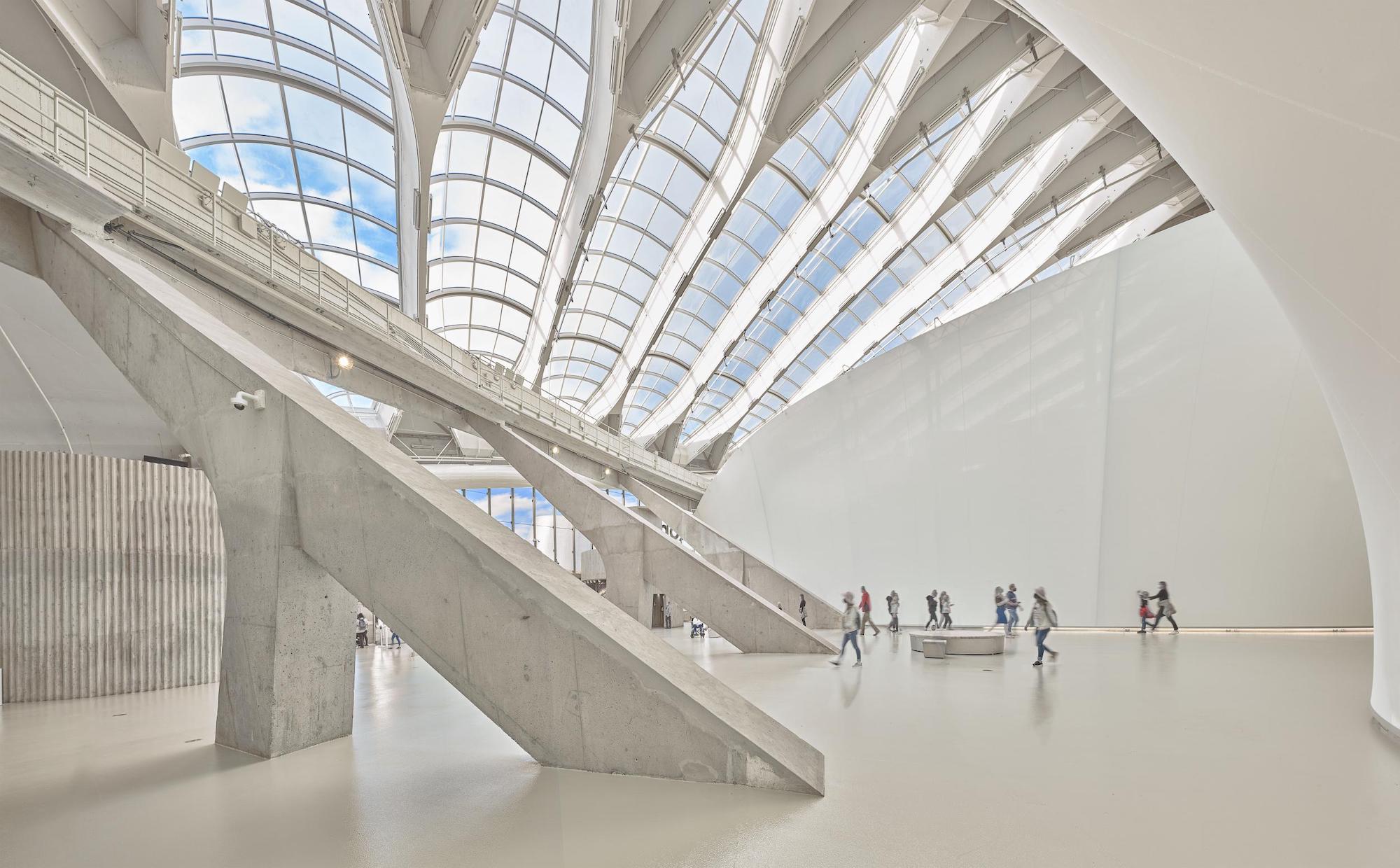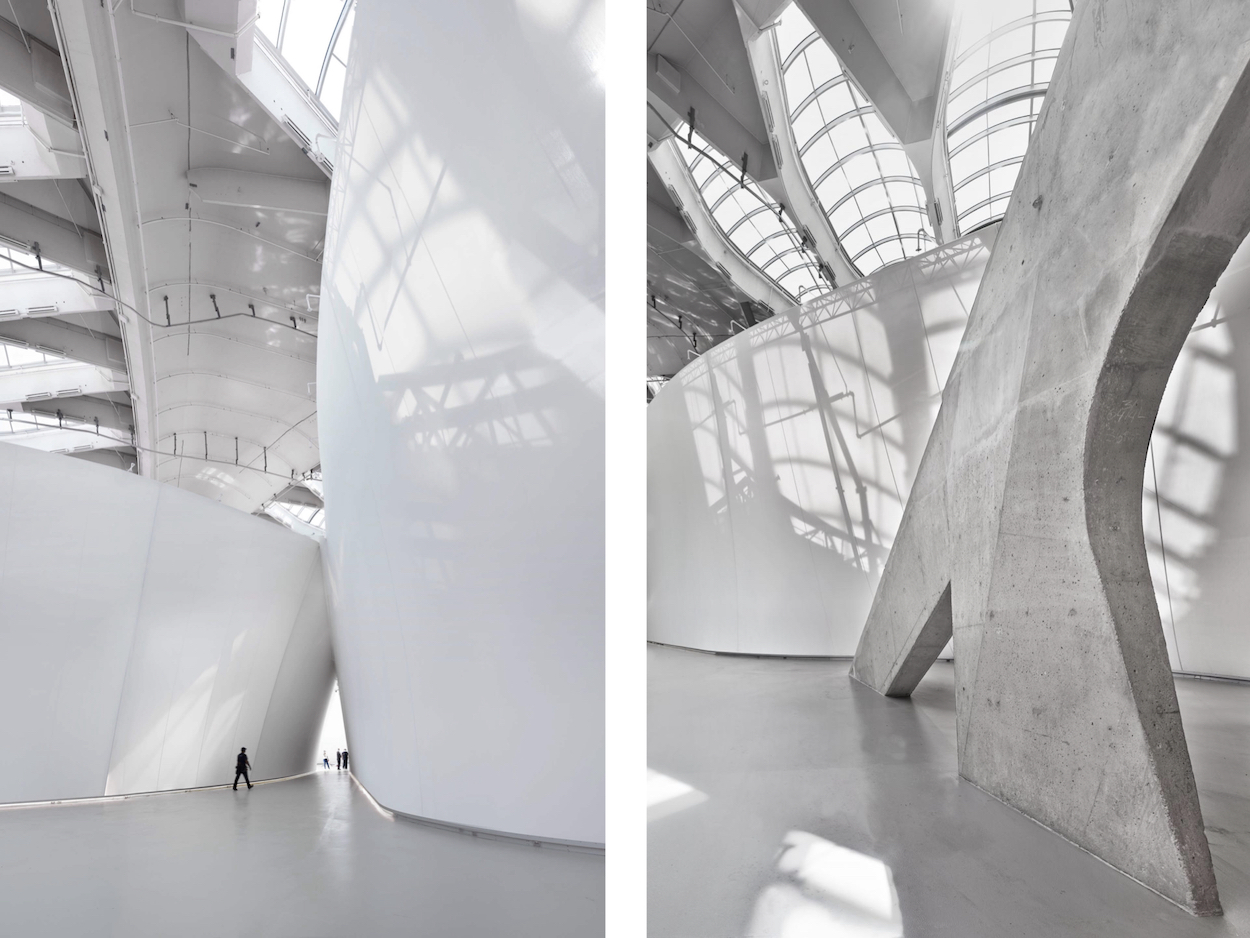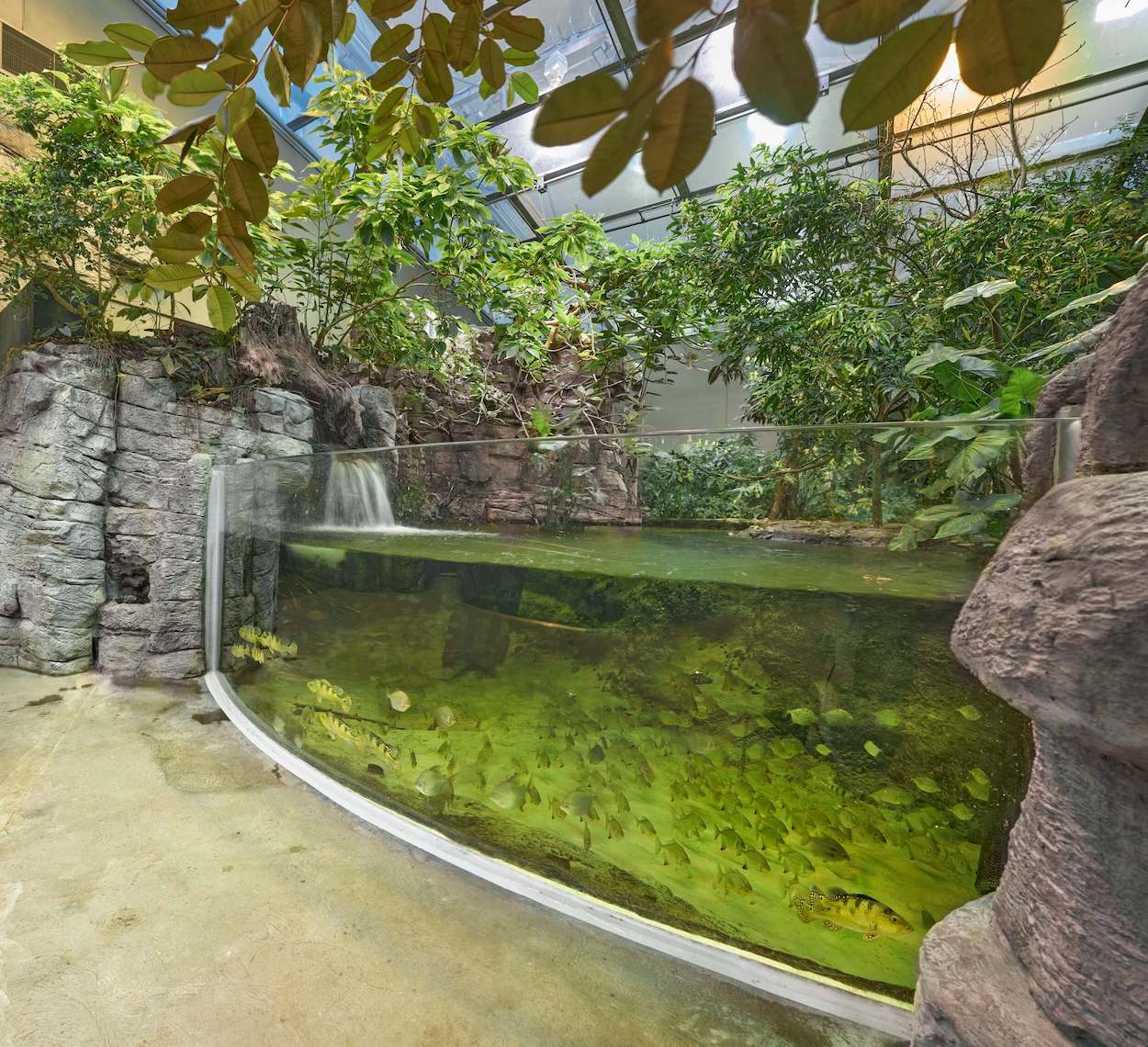For a science museum, Montreal’s Biodome has somewhat of an unconventional history. The original building, designed by French architect Roger Taillibert, once housed a velodrome for the 1976 Olympic Games. The city then decided to convert the landmark into a can’t-miss Montreal attraction in 1989, with the Biodome officially opening three years later. Beloved by locals and tourists alike, the museum recently underwent a sweeping renovation at the hands of the local firm Kanva that finally wraps after a seven-year saga of canceled contracts, construction delays, and postponed re-openings.
Clearly it was worth the wait. Perhaps the biggest intervention involved dramatically opening up the building’s core, which previously divided the Biodome’s different ecosystems and exhibitions. Visitors can now experience the building’s giant scale through a monumental entrance flooded with natural light from skylights above. Additionally, Kanva wrapped the Biodome’s quintet of immersive ecosystems in a white biophilic skin that helps serve as a guiding accompaniment as visitors move through the museum. According to the firm, the translucent skin harmoniously interacts with the skylights, with beveled horizons that “elicit a sense of infinity.”



